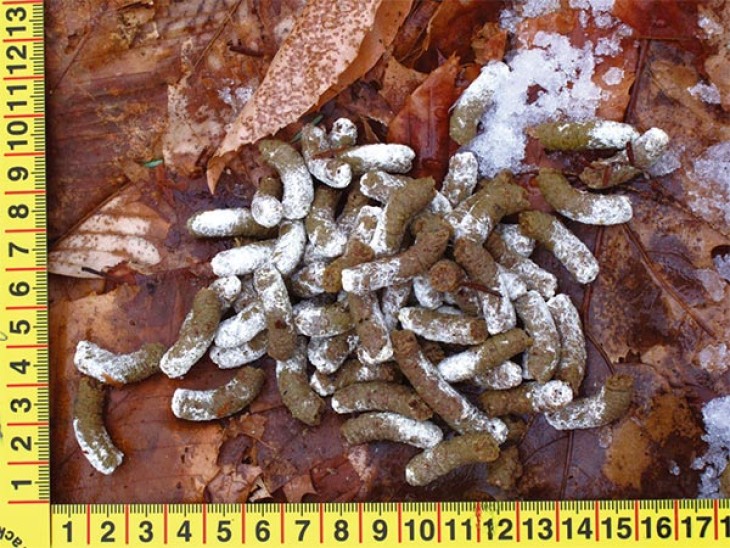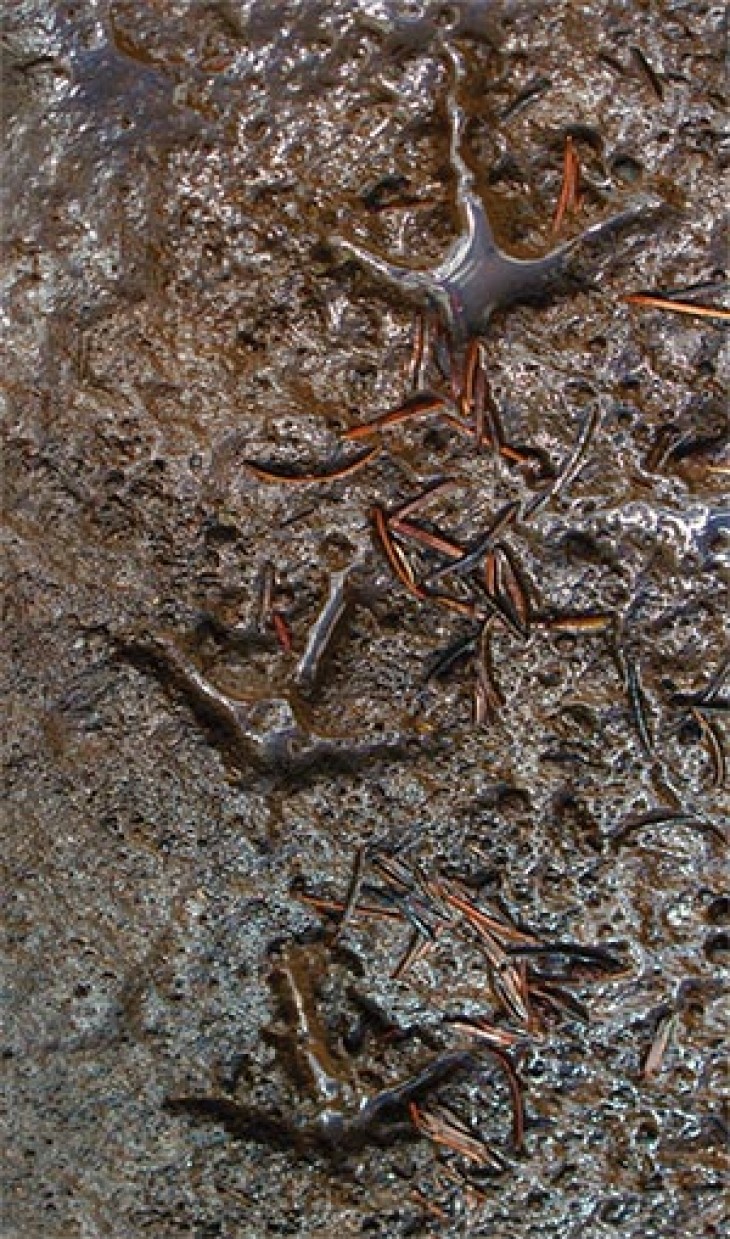If you wish to see tracks and sign of ruffed grouse, find the food. In early spring, when the deepest snowpack still lingers in the woods, chicken-sized grouse can be seen ponderously perching on stout quaking aspen branches eagerly consuming catkins. Swelling buds and flowers of other trees are also browsed, including big-toothed aspen, balsam poplar, eastern cottonwood, birch species, and speckled alder. As spring progresses, grouse walk the forest floor in seepage and edge habitats, grazing on new leaves of grasses and sedges. Increasing amounts of tender herbaceous foliage, flowers, and eventually early fruits are eaten by the crop-full. Among the roughly 100 species of plants that grouse are known to feed on, local favorites include aster, buttercup, clover, wood sorrel, violet, jewelweed, Canada mayflower, bunchberry, blueberry, wild strawberry, and the namesake, partridgeberry.
On powdery dry soil or mud, good tracks are often easy to find. The four-toed tracks are roughly 2 to 2.75 inches and register three forward-pointing toes with a fourth smaller hallux toe pointing backward. Nail impressions may or may not be seen, depending on the substrate. Sharp, pointed nail marks are always detached from the toe impressions. If the center toe is slightly left of the 90-degree angle, it’s a track made by a right foot; if the toe is right of 90 degrees, the track is of a left foot. It is also useful to know that a grouse’s side-toe angles (in relation to the center toe) range between 57 and 68 degrees, and are therefore not as forward-pointing as other big birds, such as vultures, ravens, or crows. Walking stride lengths vary depending on the grouse’s speed: a slow tentative 3 inches, or a hastier 8 to 10 inches.
In spring, trackers are delighted to discover piles of grouse scat that were eliminated on top of one another months earlier while the bird was hidden within its safe and warm snow roost. Otherwise, scattered individual scats are spread apart beneath the branch where a grouse roosted in a tree. Toothpaste-diameter droppings average 1 to 1.5 inches in length. They are fibrous and pale tan in color, mixed with a partial whitewash of nitrogenous uric acid.
Springtime drum beats of male ruffed grouse are slow and measured at first, then accelerate to a whirr of multiple wing beats. While limited territorial drumming can be heard in any season, the abundance and fervor of the springtime displays assert much more than a warning to rivals; there are females to woo. When we hear the distinctive sound of the ruffed grouse, we are listening to the beat of an altogether different drummer.





Discussion *